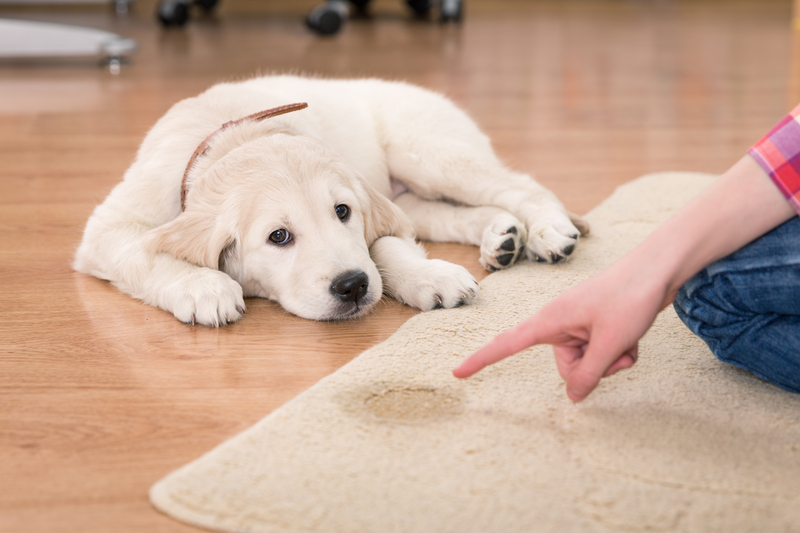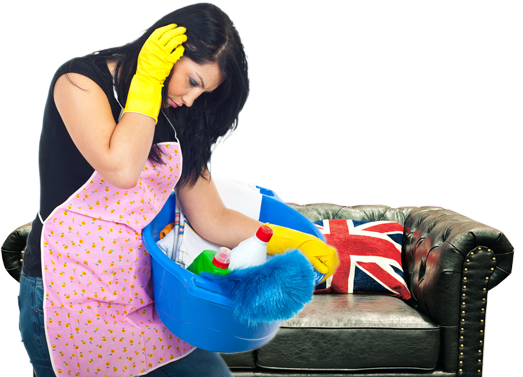Spotless and Mold-Free: Bathroom Care Done Right
Posted on 25/09/2025
Spotless and Mold-Free: Bathroom Care Done Right
Your bathroom is the heart of daily hygiene yet ironically, also a hotspot for mold, mildew, and grime. Maintaining a spotless, sanitary, and mold-free bathroom is not just about appearance--it's essential for your health and home's longevity. Read on as we unveil an in-depth guide to achieving and sustaining a pristine, fresh-smelling, and mold-free bathroom with expert cleaning tips, habits, and eco-friendly practices.
Why a Mold-Free and Spotless Bathroom Matters
Bathrooms are the most humid rooms in any home--hot showers, running faucets, and poor ventilation create an ideal environment for mold, mildew, and bacteria. Left unchecked, these intruders cause unsightly stains, unpleasant odor, and can even pose serious health risks. Here's why keeping your bathroom spotless and mold-free should be a top priority:
- Prevents allergies and respiratory issues: Mold spores can trigger allergies, asthma, and other breathing problems.
- Avoids structural damage: Persistent moisture deteriorates grout, caulk, and even drywall, underlying supports, and flooring.
- Boosts home value: A clean, fresh bathroom impresses guests and future buyers alike.
- Enhances hygiene and comfort: A spotless space makes daily routines more pleasant and inviting.
Let's take a deep dive into the best practices, tools, and routines for bathroom care done right!

Best Cleaning Products for a Spotless Bathroom
The Essentials for Effective Bathroom Cleaning
Choosing the right products is the foundation of maintaining a spotless and mold-free bathroom. Whether you prefer commercial cleaners or natural solutions, consistency is key. Stock your cleaning arsenal with:
- Disinfectant spray or wipes: Kills bacteria from toilet seats to doorknobs.
- Mildew and mold remover: Specially formulated to attack fungi in grout, tiles, and seals.
- Glass cleaner: Achieves sparkly mirrors and shower doors without streaks.
- Abrasive scrubs: Tackle soap scum and hard water stains on sinks, tubs, and tiles.
- Grout brush or old toothbrush: Perfect for deep-cleaning tile lines.
- Ventilation fan or dehumidifier: Helps control humidity, the main culprit behind bathroom mold.
Eco-Friendly and Natural Cleaning Alternatives
Prefer a green approach? Mother Nature has your back! DIY solutions not only cut down on harsh chemicals, but they're also budget-friendly. For safe and effective mold-free bathroom cleaning, try:
- White vinegar: Naturally kills bacteria and mold. Spray on problem areas, let sit, then wipe away.
- Baking soda: Acts as a gentle abrasive and deodorizer. Pair with vinegar for powerful scrubbing action.
- Hydrogen peroxide (3% solution): Great for whitening grout and sanitizing surfaces.
- Lemon juice: Breaks down limescale and leaves a fresh, zesty scent.
- Essential oils (tea tree or eucalyptus): Add to water or vinegar for extra antifungal properties.
Step-by-Step Routine for a Sparkling, Hygienic Bathroom
1. Clear, Declutter, and Dust
Begin with a clean slate. Remove all personal items, rugs, and towels. Dust light fixtures, exhaust fans, and shelves with a microfiber cloth. This step ensures no lingering debris compromises your spotless bathroom mission.
2. Tackle Toilets, Tubs, and Showers First
Toilets: Apply toilet cleaner inside the bowl, let it sit, and scrub with a brush. Don't forget the handle and flush--these are among the germiest parts of your bathroom.
Tubs and Showers: Spray tile, grout, and shower doors with a mold-fighting bathroom cleaner or white vinegar solution. Leave for 5-10 minutes to break down grime, then scrub using a stiff brush or non-scratch pad. Rinse thoroughly.
3. Clean and Sanitize Sinks, Countertops, and Faucets
- Use a mild bathroom cleaner or paste of baking soda and water for stubborn stains.
- Pay attention to faucet bases, which often harbor hidden mold and limescale.
- Wipe mirrors with glass cleaner or diluted vinegar for crystal-clear shine.
4. Attack Grout and Caulk: Mold Hotspots
Grout lines and caulking around tubs and sinks are notorious for developing mold. Dip a toothbrush into a paste of baking soda and hydrogen peroxide, then scrub affected areas. For persistent black mold spots, apply a paste of bleach (or a commercial mold remover), leave for 10 minutes, then rinse thoroughly. Always use gloves, and keep the area well-ventilated.
5. Disinfect High-Touch Surfaces
Door handles, switch plates, toilet flushers, and faucet handles need regular disinfecting. Spray with an antibacterial cleaner or wipe down with a vinegar solution.
6. Floors and Finishing Touches
- Sweep then mop with a disinfectant or diluted vinegar solution. Pay attention to floor edges and corners.
- Replace clean towels and rugs.
- Give air vents and fans a final dust.
How to Prevent Mold and Mildew in Your Bathroom
Control Moisture: Your First Line of Defense
Moisture control is essential for a mold-free bathroom. Here's how to beat the humidity and prevent mold from taking hold:
- Ventilate adequately: Always use the exhaust fan or open windows during and after showers to expel moist air.
- Wipe down wet surfaces: After bathing, squeegee tiles and shower doors to speed up drying.
- Fix leaks promptly: Address dripping faucets, leaky toilets, and loose pipes immediately.
- Keep clutter to a minimum: Fewer bottles, sponges, and towels means less surface area for mold growth.
- Launder towels regularly: Damp fabrics are mold magnets; wash and dry often.
Grout and Caulk Maintenance for a Mold-Free Finish
Inspect your grout lines and caulking every month. Replace cracked or detached sections promptly to prevent water intrusion. Seal grout each year with a penetrating sealer to keep out stains and fungus.
Invest in Mold-Resistant Materials
- Mold-resistant paint: Perfect for bathroom ceilings and walls.
- Epoxy grout: Unlike traditional cement grout, epoxy is non-porous and much more resistant to fungus.
- Plastic or acrylic caulk: Designed for wet settings, doesn't degrade as easily as silicone-based products.
Common Bathroom Mold Mistakes You Should Avoid
Even the most well-intentioned cleaning routines can fall short if you don't sidestep these bathroom care blunders:
- Ignoring ventilation: Simply opening a window after a hot shower can dramatically reduce mold risk.
- Letting water sit: Always dry surfaces, especially flat spots, pronto after cleaning or use.
- Underestimating grout care: The tiniest crack gives mold a foothold--inspect regularly!
- Using harsh chemicals excessively: Frequent use of bleach or ammonia can damage surfaces and harm indoor air quality. Use wisely and rinse properly.
- Neglecting shower curtains and liners: Wash or replace these often, as they're prime real estate for mold.
Monthly, Weekly, and Daily Bathroom Upkeep Schedules
Make Cleanliness a Habit
Routine is the secret to a long-lasting spotless and hygienic bathroom. Here's a sample schedule to keep your bathroom gleaming and mold-free with minimal effort:
Daily Tasks
- Run the bathroom fan during and after showers.
- Squeegee shower walls and doors.
- Quickly wipe and dry sink and faucet areas.
- Hang towels and bath mats to dry thoroughly between uses.
Weekly Tasks
- Scrub toilet, sink, and tub.
- Clean mirrors and high-touch surfaces.
- Wash towels, bath mats, and shower curtains.
- Mop floors and disinfect handles, switches, and light pulls.
- Inspect grout and caulk for new stains or cracks.
Monthly Tasks
- Deep-clean grout, caulk, and tiles with a mold remover or DIY solution.
- Dust exhaust fans, ventilation covers, and light fixtures thoroughly.
- Check for leaks in pipes and under sinks.
- Organize cabinets and remove expired products or clutter.
- Reseal grout and check for any mildew stains.

When to Call in the Pros
Sometimes, DIY bathroom mold removal is no longer enough--especially when you encounter:
- Large or persistent mold colonies spreading across ceilings, walls, or floors
- Recurring leaks or water damage beneath fixtures
- Health symptoms like asthma or allergies after bathroom use
Licensed remediation experts use special equipment and expertise to remove mold safely and restore your bathroom if infestation gets out of hand. Early intervention saves time, money, and your health!
Conclusion: Achieve a Spotless, Mold-Free Bathroom for Good
A spotless, mold-free bathroom doesn't have to be a dream. With the right cleaning schedule, effective products, and regular maintenance, anyone can enjoy a sparkling sanctuary free from stains, fungus, and odors. Prioritize ventilation, moisture control, and grout care, and adopt good daily habits to keep mold at bay for years to come.
Ready to experience bathroom care done right? Start implementing these expert tips today for a healthier, happier home--one gleaming bathroom at a time.
Related Resources:
Spotless and mold-free bathrooms are possible for households of all sizes and budgets with these easy, effective strategies.




